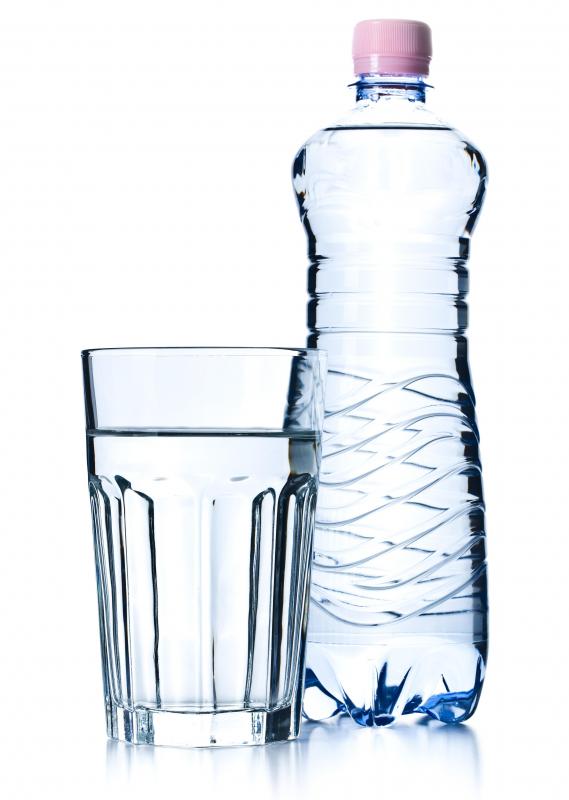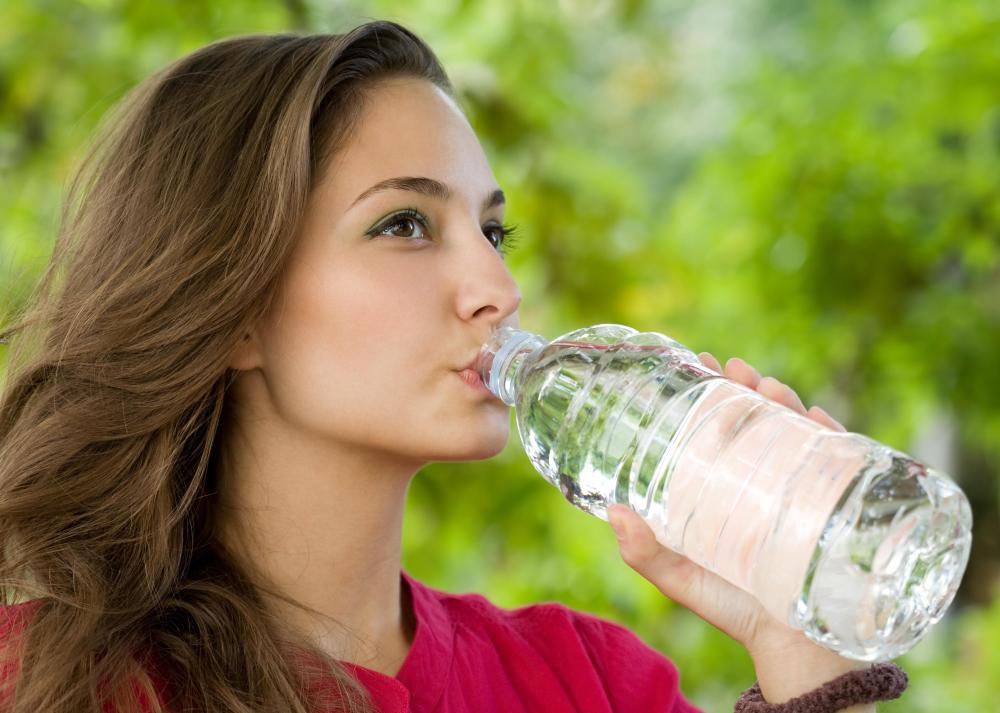At WiseGEEK, we're committed to delivering accurate, trustworthy information. Our expert-authored content is rigorously fact-checked and sourced from credible authorities. Discover how we uphold the highest standards in providing you with reliable knowledge.
What Is the Bottled Water Industry?
The bottled water industry is a segment of the global economy that bottles and sells water extracted from aquifers, springs, or manmade tap water systems. The overwhelming majority of bottled water is sold for drinking, but there’s a small segment devoted to distilled water for car batteries and scientific uses. Sales of bottled drinking water started growing rapidly in the US in the mid-1970s, and the worldwide growth in sales in the early years of the 21st century was impressive. It’s estimated that by 2008, 200 billion bottles of water were consumed worldwide, with 50 billion in the US alone.
Prior to the 1970s, half the global bottled water industry consisted of a handful of companies selling carbonated mineral water drawn from natural springs, often associated with health spas. The other half was a handful of major beverage companies selling artificially carbonated seltzer and club soda. Both products enjoyed niche markets and neither seemed destined for greatness of any sort. The bottled mineral water was restricted to a few brands, primarily in Europe, and the club soda, both in bottles and cans, enjoyed a respectable niche market worldwide and was used primarily as a mixer.

In 1977, Perrier® made the decision to sell its naturally carbonated mineral water in the US. It sold $20 million in 1978, which tripled to $60 million in 1979. The product took a few years to catch on, but it did, and currently the bottled water industry encompasses thousands of companies bottling and selling water worldwide. Carbonated bottled water returned to its position as a niche product, and the overwhelming majority of bottled water sold worldwide today is non-carbonated.

Convenience, health and flavor are among the chief reasons people buy bottled water. There’s no doubt that bottled water is very convenient virtually wherever it’s used. As to health, bottled water may often be more healthful than available alternatives. It’s in the area of flavor, though, that bottled water competes best with its free competition. With some notable exceptions like San Francisco and New York City, most American tap water, even though certified pure and clean, often tastes merely adequate or worse.

Bottled water is perceived by many Americans as purer and more healthful than tap water, even though there’s no solid evidence to support such a perception. In fact, the processing facilities responsible for producing tap water are inspected, and their product tested, far more frequently than water bottling plants. Moreover, any problem with tap water, no matter how minor, must immediately be reported to the public; bottled water producers are under no such obligations.

The extraction, bottling and distribution of bottled water imposes a significant environmental cost as well, especially in terms of the energy expended at each step. For example, except for the few glass-bottled carbonated brands, virtually all bottled water is sold in clear bottles made of polyethylene terephthalate (PET) that are 100% recyclable. Some companies ship the empty bottles from the US to the South Pacific for filling, and then back to the US. Distribution networks truck the bottles to their final points of sale in the US. Once the water is consumed, though, research indicates that less than a fourth of all bottles sold are actually recycled; most consumers simply discard the empty plastic bottles in the conventional trash stream.

Critics assert that one of bottled water’s major drawbacks is its cost. The most expensive brands often cost more per gallon than gasoline, they say, and they estimate that if Americans paid for their tap water at the same rates they pay for bottled water, the average American’s monthly water bill would be about $9,000 US Dollars. Most bottled water brands, however, cost considerably less than most other beverages.

Despite these issues, the bottled water industry flourishes worldwide. Relative to other beverages, many brands are reasonably priced and provide their customer with a convenient, usually pure drink without all the sugars and chemicals found in so many other drinks. Water bottling companies may also make significant contributions to local economies by providing employment to workers in their extraction and distribution facilities. Another major financial contribution is the revenue retained by local retailers, which generally keep over a third of the income from selling bottled water. These factors alone keep the bottled water industry thriving despite its critics.
AS FEATURED ON:
AS FEATURED ON:

















Discuss this Article
Post your comments